But help is on the way.
We've assembled a list of our favorite Windows 8 shortcuts, tricks, and
workarounds. Many focus on making the most of the OS on a traditional
desktop PC, so if you're interested in touch gestures, please check out our article
that focuses directly on the Windows 8 touch experience. Now let's
start our journey of discovery with a look at easy-to-use (though often
tough to remember!) Windows 8 hotkey commands.
Employ the hottest hotkeys we know
In these key combinations, hold down the Windows key (normally located
between Alt and Ctrl) and another key, as described on this list.
Zoom in tight
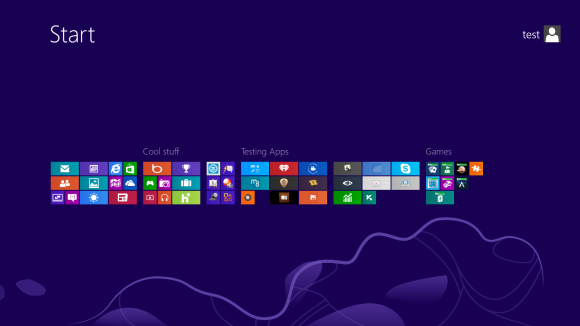
Categorize your apps
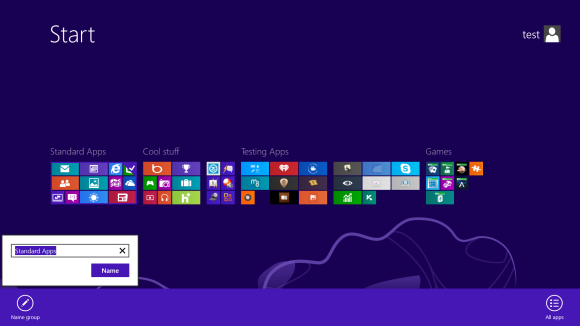
First, drag all the tiles you want to assign to a single group to the
far right-hand side of your Start screen in vacant territory; the OS
should sequester the tiles together. Once you're satisfied with your
assembly, use semantic zoom (described above) to get a bird's eye view
of your desktop. Now right-click the group (or simply drag down on it),
and select the "Name group" option on the left of the bar that appears
below. Type in the name, and enjoy your newly organized Start screen!
Close an application
Closing an app sounds simple enough, but you'll quickly notice
that close buttons are hard to find in Windows 8. That's because
Microsoft encourages us to run apps in the background where they'll take
up minimal resources, but still be accessible at any time.
Nonetheless, if you insist on being rebellious, you can close an app by
dragging it with your mouse or finger from the top of the screen all the
way down to the bottom. As you drag, the app will miminize into a
thumbnail, and when you reach the bottom, it will disappear from
view. Alternatively, you can still close apps via Alt + F4 and through
the Task Manager.
Use centralized, contextual search
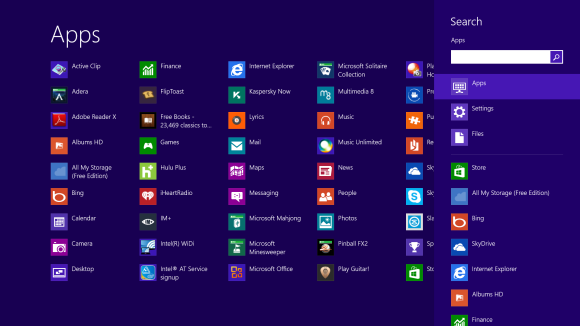
Oh, and how's this for cool? You don't even need to hit the Charms bar
to access Search. From the Start screen, simply start typing, and you'll
be quickly whisked to the text-entry field for search queries. Try it.
It works!
Adjust privacy settings
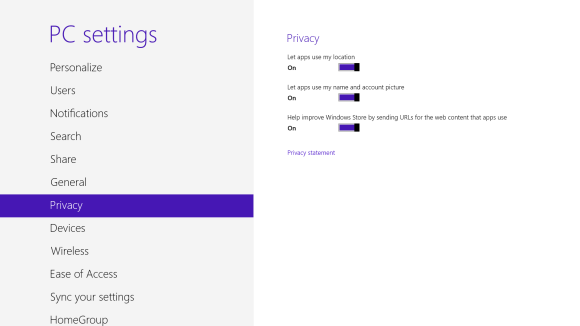
Adjust SmartScreen settings
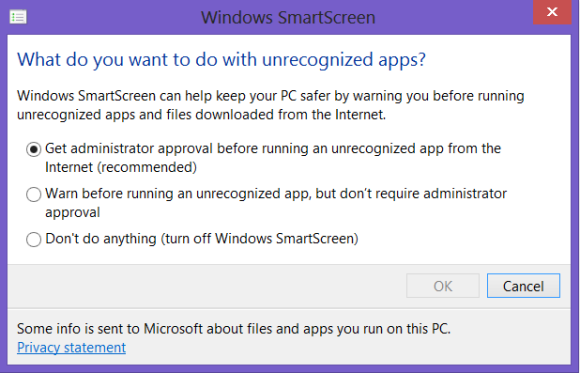
Bring up the Quick Access Menu
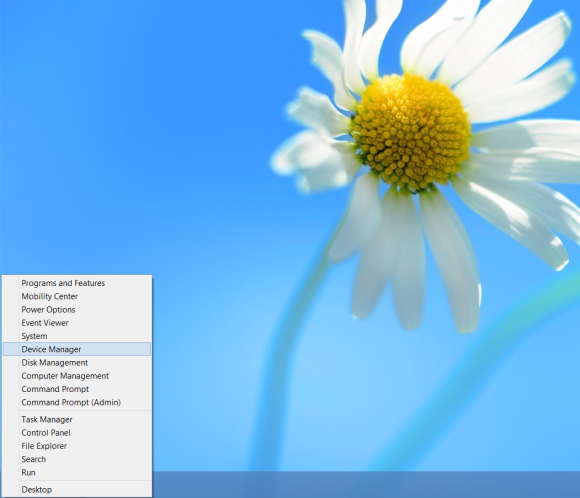
Use Windows 8 apps and your desktop simultaneously
Because the Windows 8 experience is split between new Windows 8 Store
apps and old-school desktop apps, the operating system is prone to some
strange behaviors. Case in point: When running a multimonitor setup,
Windows 8 apps will consume your main screen, leaving your secondary
screen running the desktop. This arrangement would seem to
allow full-screen multitasking among both types of apps—a modern app on
the left side, a desktop app on the right side—but this isn’t the case.
Indeed, as soon as you begin using the desktop on your secondary screen,
the new-style Windows 8 app disappears, and your primary screen begins
running the desktop.
But here’s a workaround. On your primary screen, use the new Windows 8
split-screen “snapping” function to run the desktop and a new Windows 8
Store app together. The desktop can take up the left-hand sliver, while
the Windows 8 app consumes the majority of the screen. Now use your second
display for a full desktop view. In this arrangement, you can fully
multitask between new-style apps and desktop apps, and both windows will
be large enough to be useful.
Go to Task Manager for Startup items
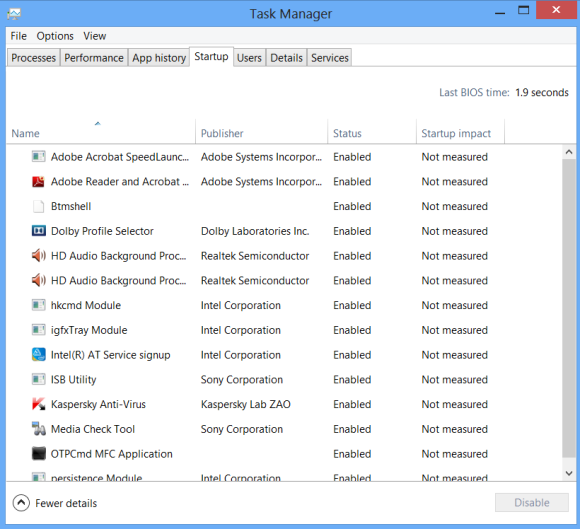
Share and share alike
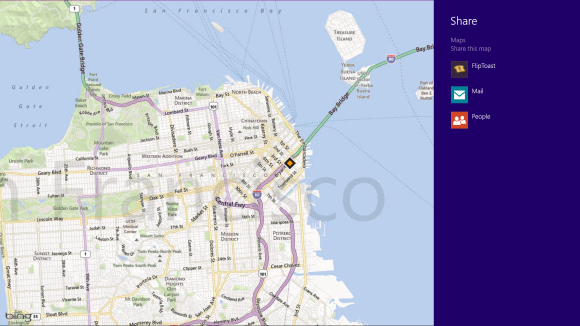
Perhaps most conveniently, you can quickly share a photo via email or
Twitter, or to your own SkyDrive or Windows Phone. The Share button is
contextual, and the more you use it, the more you’ll discover which apps
share with each other, and which don’t. (Hint: None of your desktop
apps offer sharing opportunities through the Charms menu.)
Create a picture password
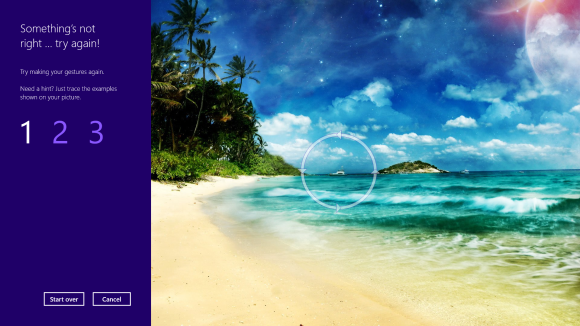
For example, to set a picture password for the image above, you could
click on the highest palm tree, draw a circle around the island, and
then swipe down from the lens flare in the upper right. Just beware: The
direction of each gesture matters! After confirming it a couple times,
your picture password will be set.
Boot to the desktop without an app
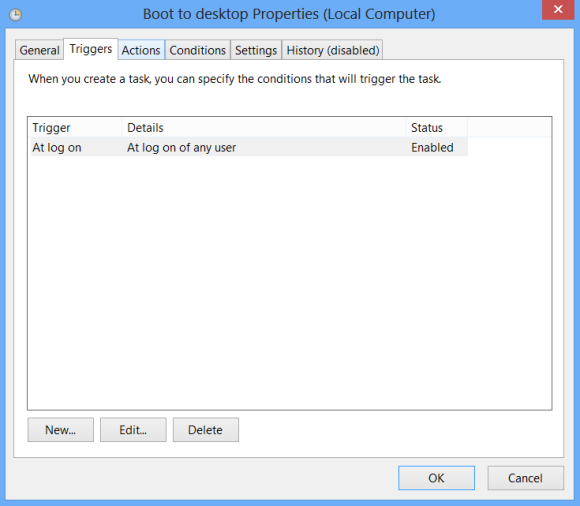
Go to the start screen and type in "schedule" to search for Schedule Task in Settings. Click on Task Scheduler Library to the left, and select Create Task. Name your task something like "Boot to desktop." Now select the Triggers tab, choose New, and use the drop-down box to select starting the task "At log on." Click OK and go to the Actions tab, choose New, and enter "explorer" for the Program/Script value.
Press OK, save the task, and restart to test it out!
Log in without a username or password
To speed up the log-in process, you may want to disable the username and
password log-in screen. You can do so by opening the Run window (press
the Windows key + R) and typing in "netplwiz" to access the User
Accounts dialog box. Uncheck the box near the top that says "Users must
enter a user name and password to use this computer." Click OK, and enter the username and password one last time to confirm your choice, and you are all set for easy access to your system.
Refresh your PC
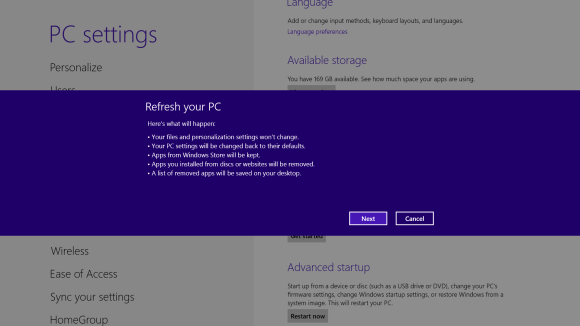
In order to perform the refresh, go to Settings and click the Change PC Settings tab near the bottom. Select the General
tab and find the "Refresh your PC without affecting your files" section
near the middle (you may also select "Remove everything and reinstall
Windows" to get the true factory settings treatment). Select "Get
started" and press "Refresh." After a few minutes the PC will restart,
and you will have a fresh copy of Windows 8.
Start in Safe Mode
Safe Mode is a great way to get into your system when something won't
allow you to start up normally. Troubleshooting becomes a breeze when
corrupted drivers and files aren't loaded that prevents a system from
functioning. It used to be as easy as pressing F8 when the system starts
up, but doing so with Windows 8 will take you to Automatic Repair Mode.
The trick to getting back to good old fashioned Safe Mode? Hold down
the Shift key and press F8 while booting up.
This takes you to the Recovery mode. Select "advanced options," then
"troubleshoot," then the "advanced options" again (there are a lot of
advanced options). Select Windows Startup Settings and finally the Restart button. This will reboot the computer and give you the option to boot into Safe Mode.
If you need to get into Safe Mode from within Windows, open the dialog box (the Windows key + R) and type "msconfig" (no quote marks). Select the Boot tab and check the Safe boot box. The system will continually boot into Safe Mode until you go back and uncheck the box.
Turn Live Tiles on and off
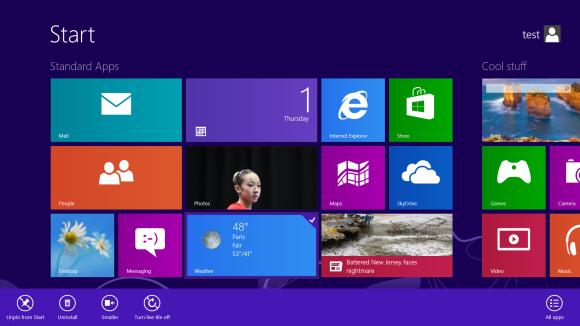
You can customize which apps are live and which aren't by right-clicking
on the tiles. A settings bar on the bottom will pop up with an option
to turn the Live Tile on or off. Simply select the preferred option, and
you're all set. Note, however, that not all apps have a live, real-time
data-streaming option.
Find the Windows games folder
Currently, the games folder used in Windows 7 isn’t present in Windows
8. Fear not; if you install any current-generation PC game that would
regularly save to this folder, the folder is automatically created. For a
quick way to find it, right-click on the game icon on the Start screen
and choose “Open file location” at the bottom.
Activate Family Safety
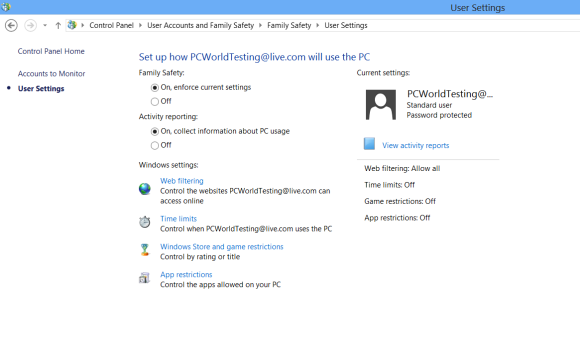
Shut down with one click
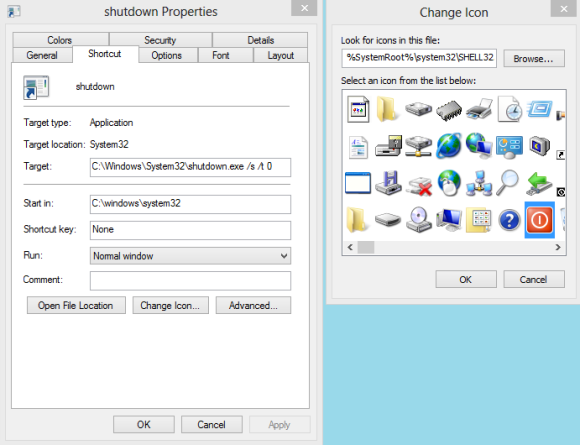
Create a shortcut on your desktop (right-click, go to New, then Shortcut). Enter "shutdown /s /t 0" (with no quotes, and, yes, that's a zero not an "O") as the location of the item, and press Next. Now name the shortcut (prefereably "Shutdown") and press Finish.
Right-click the shortcut, and navigate to Properties. Choose Change Icon in the Shortcut tab, and then OK
to leave the warning box. Choose an icon of your choice from the list.
In the screenshot above, you'll see we chose a Power button.
Right-click the shortcut again, and select Pin to Start. You can place the icon on your Start screen wherever it's convenient. Clicking it will instantly shut down your computer.
skip to main |
skip to sidebar

Powered by Blogger.
Categories
- Cisco (64)
- Computer repair (8)
- Computer Tricks (59)
- Configure Camera (13)
- Exchange Server 2013 (15)
- Forefront (TMG) (1)
- Internet (42)
- Mikrotik (28)
- Network (12)
- Point to Multipoint (2)
- Point to Point (3)
- Program Tips (40)
- Software Tips (15)
- Tips (76)
- Video Training (1)
- WDS (3)
- Wifi (30)
- Window Server (15)
- Window Server 2012 (5)
- Windows 8 (8)
Popular Posts
-
Controller Installation Is there a user guide? Yes, check http://www.ubnt.com/download#doc:unifi . You will find the latest Datasheet...
-
We all know that we have only two server roles in Exchange Server 2013 and this is like front end and backend architect server role ...
-
In this post we will see the Exchange Tools that are available in Exchange Server 2013 installation. Many of the tools that are available ...
-
1. Which of the following are required when adding a network to the OSPF routing process ? configuration (Choose three.) network address lo...
-
This tutorial explains how to configure a router to share a single Internet connection (WAN) among multiple local computers (LAN) using NA...
Copyright © 2013 Computer Tricks and Tips | Powered by Blogger


 11:11 PM
11:11 PM

 Posted in:
Posted in: 
0 comments:
Post a Comment